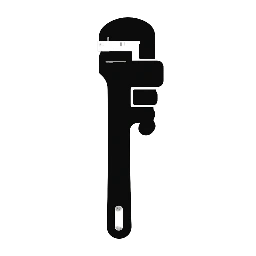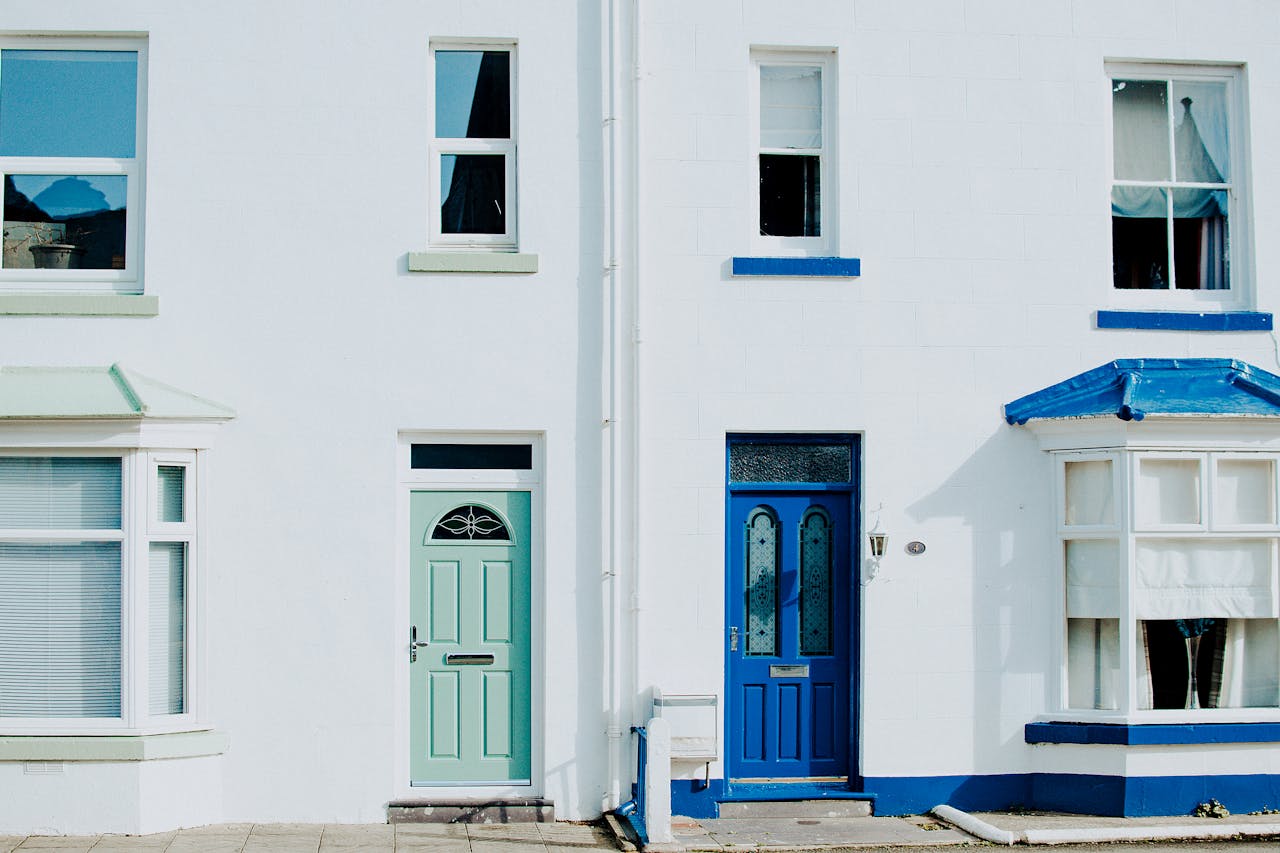Managing a rental duplex comes with its unique set of challenges, and plumbing issues often top the list. A burst pipe, persistent leak, or clogged drain in one unit can quickly impact the other, leading to significant headaches, costly repairs, and tenant dissatisfaction. This in-depth guide provides landlords with comprehensive pipe repair solutions, focusing on prevention, efficient problem-solving, and smart investments to protect your property and bottom line.
Understanding Common Plumbing Issues in Duplexes
Before diving into solutions, it’s crucial to understand the most frequent plumbing problems encountered in rental duplexes:
- Clogged Drains: The most common culprit. Hair, grease, food debris, and foreign objects can accumulate in sinks, showers, and toilets, causing slow drainage or complete blockages. In duplexes, a clog in a shared main line can affect both units.
- Leaky Pipes: Often hidden behind walls or under floors, leaks can go unnoticed for extended periods, leading to water damage, mold growth, increased water bills, and structural issues. They can range from a minor drip to a significant burst.
- Running Toilets: A seemingly minor issue that can waste thousands of gallons of water annually, significantly increasing water bills.
- Low Water Pressure: Can be caused by mineral buildup, leaks, or issues with the municipal water supply.
- Water Heater Problems: Malfunctioning water heaters can lead to inconsistent hot water, strange noises, or complete failure, impacting tenant comfort.
- Sewer Line Backups: A severe and unsanitary problem, often caused by tree root intrusion, significant clogs, or a damaged sewer line. This can affect multiple units and is costly to repair.
- Corroded or Aging Pipes: Older duplexes often have outdated plumbing materials (e.g., galvanized steel, copper that’s reaching the end of its lifespan) prone to corrosion, leading to leaks, discolored water, and eventual failure.
- Frozen Pipes: In colder climates, pipes in unheated areas (crawl spaces, basements, exterior walls) can freeze and burst, causing extensive water damage.
Proactive Strategies: Prevention is Key
The most cost-effective pipe repair solution is prevention. Implementing a proactive plumbing maintenance plan can significantly reduce the incidence of major issues.
1. Regular Inspections and Maintenance
- Visual Checks (Monthly/Quarterly): Encourage tenants to report any signs of leaks (water stains on walls/ceilings, damp spots, musty odors, dripping sounds), slow drains, or running toilets immediately. As a landlord, conduct your own visual inspections of accessible plumbing, checking under sinks, around toilets, and exposed pipes for any signs of dampness or corrosion.
- Professional Plumbing Inspections (Annually): Schedule an annual inspection by a licensed plumber. They can identify subtle issues like hairline cracks, corroding pipes, or early signs of root intrusion in sewer lines using specialized equipment like sewer cameras. This can catch problems before they escalate.
- Water Heater Flush (Annually): Flush the water heater tank annually to remove sediment buildup, which improves efficiency and extends the unit’s lifespan.
- Drain Cleaning (Annually/Bi-annually): Consider professional drain cleaning for main lines to prevent blockages, especially in older properties or those with a history of clogs.
2. Educating Tenants on Plumbing Care
Tenants play a crucial role in preventing plumbing problems. Provide clear guidelines and emphasize their responsibilities:
- Garbage Disposal Do’s and Don’ts: Educate tenants on what not to put down the disposal (e.g., grease, coffee grounds, fibrous foods, eggshells, pasta, rice). Emphasize using cold water when operating the disposal.
- Toilet Etiquette: Stress that only toilet paper should be flushed. Provide a list of items not to flush (e.g., wet wipes, sanitary products, paper towels, dental floss, cotton swabs).
- Drain Screens: Encourage or provide drain screens for all sinks and showers to catch hair and debris.
- Reporting Issues Promptly: Highlight the importance of reporting any plumbing issues, no matter how small, immediately. This allows for quick intervention, preventing minor problems from becoming costly emergencies.
- Location of Shut-Off Valves: Inform tenants about the location of the main water shut-off valve for the duplex and individual shut-off valves for sinks, toilets, and water heaters within their unit. Knowing how to turn off the water quickly during a leak can minimize damage.
3. Smart Property Upgrades
- Water Softeners: In areas with hard water, installing water softeners can prevent mineral buildup in pipes and appliances, extending their lifespan and improving water flow.
- Pipe Insulation: In colder climates, insulate exposed pipes in unheated areas (basements, crawl spaces, attics, exterior walls) to prevent freezing and bursting.
- Low-Flow Fixtures: Install low-flow toilets, showerheads, and faucets to conserve water and reduce water bills, while also lessening the strain on the drainage system.
- Leak Detection Devices: Consider installing smart leak detection devices that can alert you (and potentially your tenants) via an app when a leak is detected, even when you’re not on-site.
- Upgrading Aging Plumbing: If your duplex has significantly old plumbing (e.g., galvanized pipes), consider a phased replacement. While a substantial investment, it can prevent recurring issues and major emergencies down the line, increasing property value and tenant appeal.
Effective Pipe Repair Solutions
When plumbing problems do arise, a swift and appropriate response is crucial.
1. For Minor Leaks and Clogs (DIY Potential with Caution)
- Plungers and Drain Snakes: For minor clogs in sinks or toilets, encourage tenants (with clear instructions) or address them yourself with a plunger or a small hand-held drain snake.
- Temporary Pipe Repair Kits: For very small, pinhole leaks on accessible pipes, temporary repair kits (like those with epoxy putty or water-activated repair tape) can provide a stop-gap solution until a professional plumber arrives. Emphasize these are temporary fixes, not permanent solutions.
- Tightening Connections: Sometimes, a small leak is simply due to a loose connection. Gently tightening fittings with a wrench can resolve the issue.
2. For Moderate to Severe Issues (Professional Intervention Required)
- Professional Drain Cleaning: For persistent or deep clogs, a professional plumber will use specialized tools like augers, hydro-jetting (high-pressure water), or camera inspections to clear the blockage effectively and identify its cause.
- Leak Detection and Repair: If a leak is suspected but not visible, professional plumbers have acoustic leak detection equipment and thermal imaging cameras to pinpoint the exact location, minimizing the need for destructive wall or floor removal. Repair methods vary based on pipe material and location (e.g., patching, section replacement).
- Pipe Replacement (Sectional or Full): For corroded, burst, or significantly damaged pipes, a plumber will typically cut out the damaged section and replace it with new piping (PEX, copper, or PVC, depending on the application and local codes). For widespread issues, a full repiping might be recommended.
- Trenchless Sewer Repair: For damaged main sewer lines, trenchless methods (pipe bursting or pipe lining) can be significantly less disruptive and costly than traditional trenching, as they avoid digging up entire yards or driveways. This is a highly specialized repair.
- Water Heater Repair/Replacement: Depending on the issue (e.g., faulty heating element, pressure relief valve), a plumber can repair or recommend replacing the water heater.
3. Emergency Plumbing Response
Have a reliable, 24/7 emergency plumber on speed dial. This is critical for issues like:
- Burst pipes
- Major sewage backups
- Complete loss of water
- Significant flooding
Knowing who to call and having a plan in place can minimize damage and tenant disruption. Ensure tenants have this emergency contact information readily available.
Cost-Effective Solutions for Landlords
Managing costs is a primary concern for rental property owners.
- Preventative Maintenance: As highlighted, this is the most effective long-term cost-saver. Investing in regular inspections and tenant education prevents minor issues from becoming expensive disasters.
- Early Detection: Addressing small leaks or slow drains immediately prevents them from escalating into burst pipes, extensive water damage, or mold remediation, which are far more costly.
- Compare Quotes: For larger repairs, obtain quotes from at least two to three licensed and insured plumbers.
- Consider Durable Materials: When replacing pipes, discuss durable and long-lasting material options with your plumber (e.g., PEX or copper) that may have a higher upfront cost but offer better longevity and fewer future issues.
- Understand Insurance Coverage: Familiarize yourself with your landlord insurance policy. Most policies cover sudden and accidental water damage (like a burst pipe), but often exclude damage from gradual leaks or lack of maintenance. Always report plumbing-related damages to your insurer promptly.
- Tenant Responsibility Clause: Include a clear clause in your lease agreement outlining tenant responsibilities for preventing clogs and reporting issues. This helps clarify accountability for damages caused by negligence.
Communicating with Tenants During Plumbing Issues
Clear and empathetic communication with your tenants is vital.
- Set Expectations: In your lease, outline how plumbing issues should be reported and your typical response time.
- Acknowledge and Respond Quickly: When a tenant reports an issue, respond promptly, even if it’s just to say you’ve received their message and are arranging for a plumber.
- Provide Updates: Keep tenants informed about the plumber’s arrival time, the scope of the repair, and estimated completion.
- Minimize Disruption: If water needs to be shut off, give as much advance notice as possible and clearly communicate the expected duration.
- Follow Up: After the repair, follow up with the tenant to ensure the problem is resolved to their satisfaction.
Conclusion
Effective pipe repair solutions for rental duplexes are a blend of proactive prevention, timely intervention, and smart financial decisions. By understanding common issues, implementing preventative maintenance, educating tenants, and having reliable professional contacts, landlords can safeguard their investment, minimize disruptions, and ensure a comfortable living environment for their tenants.


Leave a Reply